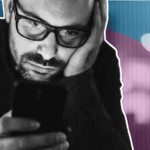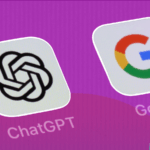By Tom Murphy, Head of Account Management, BBH LA
Gen Z is an enormous business prize: this group is the biggest generation ever, estimated at 30% of the global population.
As we know, they are almost constantly Fortniting, TikToking and Netflixing their way through the world. And to be honest, I don’t blame them – they’re distracted by some pretty high-quality stuff. So how do marketers breakthrough in this land-grab for their attention?
Because, while I would argue that the basic needs and wants of people, by and large, have not changed THAT much across generations, this generation is uniquely equipped to avoid some of the ad tricks we’ve relied on for the past 50 years or more.
The ability to avoid advertising — powered partly by tech products (65 million Americans use AdBlockers), partly by subscription models that enable avoidance of marketing (especially by the wealthy, who are willing to pay for premium subscriptions), partly by Gen Z’s supremely skilled and ruthless navigation of the digital world, which sees them often physically distract themselves while ads play out, is one issue. A second issue is that, when you actually are able to reach Gen Z, their finely tuned bullshit-detector quickly goes off around anything that resembles corporate hypocrisy, inauthenticity or smoke and mirrors.
So, where does all this leave marketers?
We need to find innovative ways to reach Gen Z that are genuine, rooted in truth (for the brand and the audience) and ideally, additive to their lives. When advertising is at its best, I firmly believe that it can, and does, become a part of the culture. The sad part is that most of the advertising we see today gets nowhere near this level.
So, what if we reframed the conversation entirely?
Rather than pushing products in front of people and convincing them through a blend of the 4 P’s that our product is worth their cash; how about pulling people towards the products we want them to buy, by creating entertainment they will happily spend time with? This way we can get the audience (and not just Gen Z, any audience) close to the product without overtly ‘selling,’ and drive the early-stage consideration which shapes so much of the rational thinking that comes lower down the funnel.
One current example we’ve been working on at BBH is Exposure, a new competition reality series airing on Hulu. (The show premiered on April 26th). Developed in conjunction with Samsung, the show features up-and-coming photographers participating in weekly challenges that put their shooting skills to the test, with the winner taking home $250,000 and being crowned the next great photographer. Contestants use a Galaxy S21 Ultra, but the branding is minimal. The engaging storyline, and the eye-catching photography, are what will get the audience’s attention.
Now, this isn’t to say a show can simply replace all of your marketing comms, and this will be paired with lots more ‘traditional’ marketing assets captured on set. These assets will build on the emotional connections made with the contestants and, we hope, with the brand in order to translate into sales over the short term and brand affinity over the long term.
Unilever has been at the forefront of this kind of marketing, with its animated short film Hair Love winning an Oscar. Nike’s The Day Sports Stood Still, a documentary co-produced with HBO about the pandemic-induced sports shutdown and broader civil rights movement is another poignant example.
In these instances, the brand gets to show off itself and its products by building entertainment formats designed to reach the audience in a way that is emotionally engaging and free from marketing bullshit. Gen Z doesn’t just wait to hit the ‘Skip ad’ button to get to the stuff they actually want; they get to follow characters they care about and all the while the brand plays a role in a story that is authentic, additive and beneficial, business-wise. It’s a win-win.
What next? Marketing that generates profit on its own? Now, there’s a thought.








